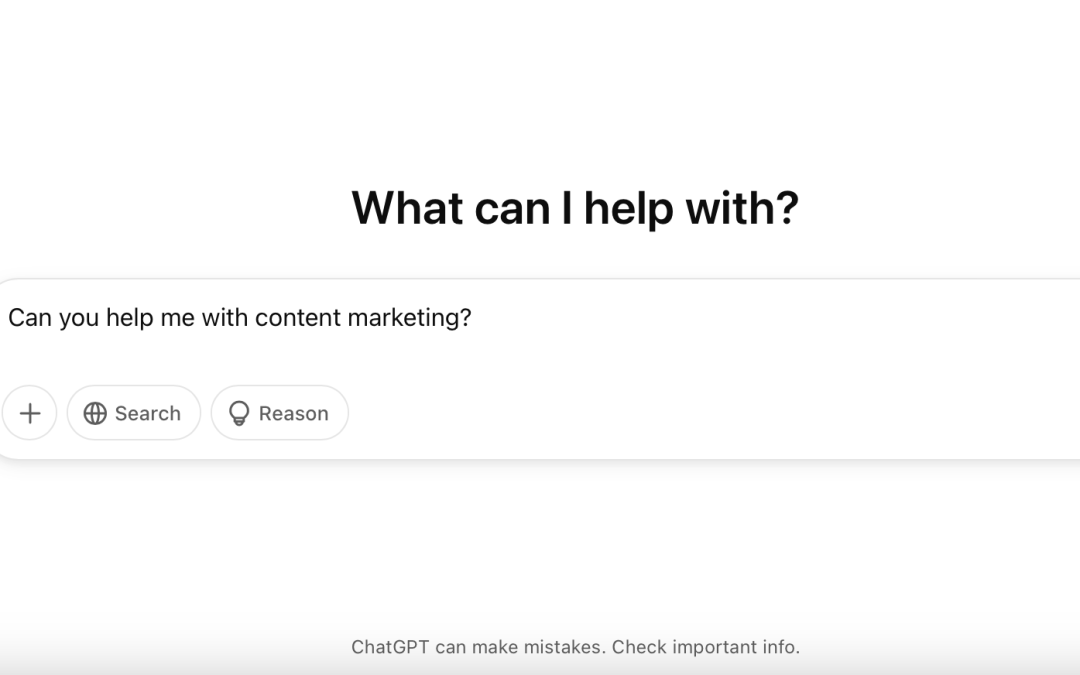Create content that inspires geniune connection
Balancing AI and authenticity is possible if you remember to treat AI as a tool instead of a human replacement.
It can be really hard to create content for your business all the time, particularly if you’re not in the business of creating content.
I’ve been a writer for years, and it’s hard for me, too. Sometimes, you have a concept, but the words are all stuck. Other times, you know you need to post something, anything, online for people to know you exist, but all you can do is stare into space and wrack your brain.
In the last few years, generative artificial intelligence (AI) systems with a foundation of language learning entered the mainstream offering to do all that work for you.
But should you let it?
Content marketing is all about using media to attract, engage and retain your customers. Yes, generative AI can help you create content, but if you let it do too much of the work, you risk making your brand voice inauthentic. Not great for creating connections.
So how can you use AI to get past writer’s block and aid in content creation without losing that human touch?
As a company, Yankee Publishing’s creative works, such as published stories, are not created with AI-generated text. The works are original and free of plagiarism, including text copied from AI services. However, we still use AI tools for other purposes, including brainstorming and organizing ideas, search optimization and analyzing engagement data.
Benefits of using AI for content creation
You wouldn’t use a hammer to fasten a screw. It might eventually work, but it’s not the best tool for the job.
AI is a tool like any other; for some jobs, it’s great, but for others, not so much.
Generative AI works by identifying patterns within large datasets and then creating something “new” that closely resembles the data it was based on. Basically, it mimics that data with some variations based on the prompts you instruct it with.
If you are looking for creativity, AI is not particularly original since the output is based on what already exists. If you’re looking for pattern recognition, this is where it excels.
How to use AI’s pattern recognition to your benefit:
- Identify trending topics and frequently searched queries
- Brainstorm topics for your content
- Suggestions for including search-friendly keywords in your text
- Review your past content and social posts to see what similarities your highest-performing pieces share
- Customizing and personalizing your work for different audiences
- Review written pieces to identify any knowledge gaps the piece omits
Risks of using AI-generated content
AI’s abilities do include content generation, and many people are using it to create articles and other media. Nothing is stopping you from doing so as well. You might find that without human editing, that content feels hollow and lacking in authenticity.
You should keep in mind some risk factors of using fully AI-generated content.
- Since it’s based on other people’s work, there are copyright issues at play.
- It can be hard to stand out when your content is modeled on an algorithm to make it just like everyone else’s. Using it to brainstorm content ideas may trigger your creativity, but overuse of AI will lead to an overall lack of novelty.
- Studies show that AI can have more confusing output since it may be interpreting jargon-heavy source material. A skilled writer would know how to explain things so a layperson would understand.
- AI has been known to “hallucinate” or make up things that haven’t happened. You should always check the facts on anything AI provides, as it may attempt to create information from non-existent data.
Balancing AI and authenticity
Your customers will ultimately be doing business with you, not a robot. You should use your content as a way to introduce yourself to them to start building that relationship. AI may be useful for discovering what topics are useful to your customers, but by sharing personal stories with human emotion, you can create a more authentic connection with your customers.
For any information you plan to use that was discovered through AI, double-check the sources. (This is a good practice to follow regardless of where you’re getting data.) You’ll also want to double-check that the tone and voice of the piece feel consistent with your brand identity.
Make sure your content is relatable, useful and, importantly, able to be understood. It should resonate with the audience and feel conversational. You’re creating this content to highlight your knowledge, but they won’t get that message if they can’t figure out what you’re trying to convey.
Lastly, be straightforward with how you’re using AI. Obscuring or omitting your use of AI in your content can make customers feel deceived. It will destroy any trust they have; that’s the opposite of building brand loyalty. Increasingly, there are legal and ethical guidelines for AI identification of which you don’t want to run afoul.
Businesses embarking on their content creation journey will discover that AI provides useful tools to organize and structure their materials. But a genuine connection comes best when human writers tell the company’s story. Balancing AI and authenticity is an art that can showcase how you tell a story that resonates.
At Yankee Custom Marketing, we’re using AI tools to enhance our customer’s marketing plan, but the foundation of that plan is our more than 200 years of experience in authentic New England storytelling.

